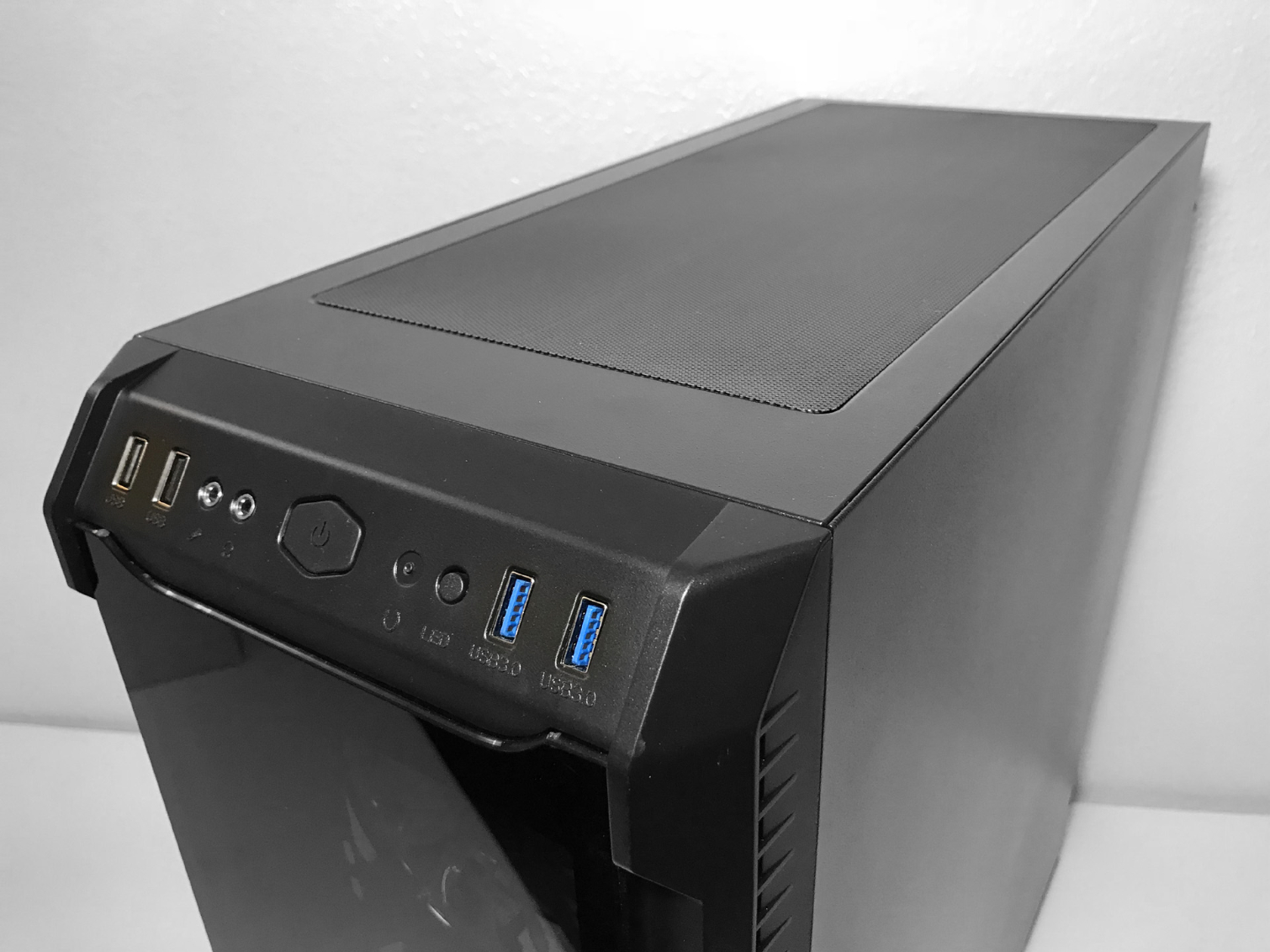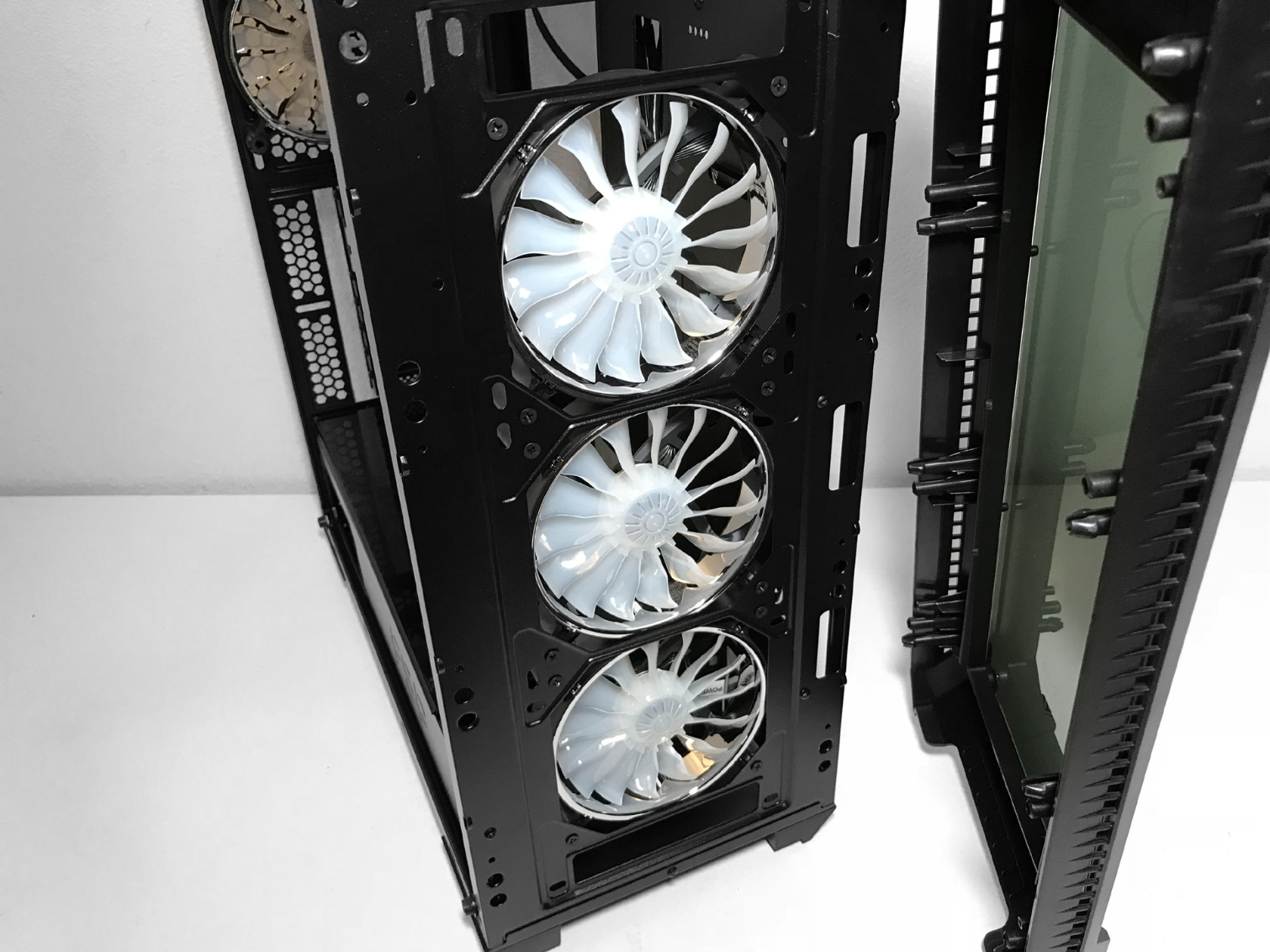Tom's Hardware Verdict
Top-notch thermal performance combined with a laundry list of premium features guarantees this chassis will delight the perfromance enthusiasts in all of us. In the end, if you take all things into consideration, we think this is a case (pun intended) of getting exactly what you pay for. Nevertheless, shoppers will have to decide whether these factors justify the Panzer EVO RGB's $220 price tag.
Pros
- +
Good thermal performance
- +
Two tempered-glass Panels
- +
Includes four 120mm LED fans
- +
Lighting controller with broad compatibility
Cons
- -
No intake fan filters on front
- -
Poor quality construction
- -
Feels and looks cheap
- -
Not true E-ATX
Why you can trust Tom's Hardware
Features & Specifications
If you are in the market for a mid-tower ATX chassis that has RGB functionality, and tempered glass panels, FSP's latest chassis, the CMT520, might be just what you are looking for. Priced at $110, this chassis comes with features found on much more expensive cases such as a built-in LED controller and four RGB-capable fans that are compatible with MSI's Mystic Light, Asus' Aura Sync, and Gigabyte's RGB Fusion lighting.
Sporting two tempered glass panels, eight expansion slots, a wide open interior design and the ability to accommodate large graphics cards and CPU coolers, FSP's CMT520 is clearly marketed towards gamers and enthusiasts who enjoy showcasing their system builds. Though this case has good thermal performance with looks to match, the company's own CMT510 offers many of the same features for a lot less money.
Though the CMT520 has a bit more stylish appearance than its predecessor, the CMT510, the overall construction quality of this chassis feels inferior by comparison. Measuring 485 x 210 x 430mm (HWD) and weighing just shy of 19 lbs, the CMT520 is constructed of steel, plastic, and tempered glass panels. This chassis, as with all the cases in FSP's CMT line, is only available with a black exterior. It would be nice to see color combinations such as those found on NZXT


Almost the entire top of the chassis is covered by a magnetic mesh fan filter, and below that are mounting locations for three 120mm / 140mm fans. In the angled area between the top and front of the case you will find a pair of USB 3.0 ports, two USB 2.0 ports, RGB lighting control button, headphone and microphone jacks, HDD LED, power, and reset buttons.





The left and front panels on the CMT520 are both feature tempered glass construction. The left panel is held in place by rubber-coated locating pins and large thumbscrews. The front glass panel is held in place by four tiny screws that thread through back of the plastic front panel. The front fascia holds the glass panel roughly 5mm away from the frame, allowing air to be drawn into the chassis around the sides of the glass panel. There is also a row of vents on both sides of the front face of the case.
Around back you will find eight expansion-card slots, a 120mm exhaust-fan mounting location, the motherboard I/O area, and an opening for a bottom-mounted PSU.
The bottom of the case has a hole for power-supply ventilation covered by a 6" slide out nylon dust filter, and four rectangular rubber coated plastic feet.
Get Tom's Hardware's best news and in-depth reviews, straight to your inbox.



The CMT520's fan-filtration system is confusing to say the least. As mentioned, the entire top of the case is covered by a magnetic filter. This is nice if you have plans to mount fans or an all-in-one cooler in this location but no fans are installed in here by default. This chassis also has a removable nylon fan filter for the PSU. This obviously benefits the power supply but, by design, air that is drawn in by the PSU fan is immediately vented out the back of the unit without ever entering the chassis main compartment. Meanwhile the three 120mm intake fans in the front of the chassis are completely unfiltered. Although it is possible to re-purpose the magnetic filter from the top of the case to cover the intake fans, end users will most likely opt for a third party magnetic filter at an additional cost.
The overall build quality of the CMT520 feels cheap. The metal panels flex easily, the thumbscrews are the plastic coated type, the plastic front panel is thin and pops off easily, and the lack of an intake fan filter all point to cost-saving design choices that hurt the quality of this case. Chassis such as the Riotoro CR500, Lian Li PC-011 Dynamic, and FSP's own CMT510 offer markedly better build quality at a lower price.
Specifications
| Type | Mid Tower |
| Motherboard Support | EATX, ATX, mATX, Mini-ITX |
| Dimensions (HxWxD) | 495 x 215 x 510mm |
| Space Above Motherboard | 6.4” recess (163mm) |
| Card Length | 423mm |
| Power Supply Format | Standard ATX PS/2 |
| Weight | 8.5 kg |
| External Bays | (0) 5.25" |
| Internal Bays | (2) 3.5", (4) 2.5" |
| Card Slots | 8 |
| Ports/Jacks | (2) USB 2.0, (2) USB 3.0, (1) Audio/Mic |
| Other | LED-lit fans, tempered glass on four sides |
| Front Fans | 3x 120 mm LED fans (Supports 3x 140 mm) |
| Rear Fans | 1x 120 mm LED fan |
| Top Fans | ✗ (Supports 2x 120/140 mm) |
| Bottom Fans | ✗ |
| Side Fans | ✗ |
| Dampening | ✗ |
MORE: Best Cases
MORE: All Case Content
Steven Lynch is a contributor for Tom’s Hardware, primarily covering case reviews and news.


